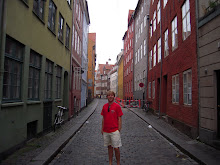The first time a mirror comes into play occurs when Orpheus is in the bedroom of The Princess, who we later learn to be Death. After thoroughly confusing Orpheus as to whether his reality is real—“sleeping or dreaming, the dreamer must accept his dreams”—Death sits down in her chair, the mirror in front of her reflecting both her expression and that of Orpheus. The second of the many cryptic radio emissions syncs with the visual: “the mirrors would do well to reflect further.” On its second repetition, the mirror suddenly cracks.
The mirror cracking is one of the film’s early signs that something otherworldly is happening, but the action also reveals the technical mastery director Jean Cocteau displays when it comes to filming mirrors. In the later scene when Death and Cegeste take Eurydice to hell, the camera and editing tricks are on full display. When Death smashes the mirror and exits into the world of the beyond, the pieces magically reassemble, a clever trick of running the film backwards (and, maybe, a far-off reference to the radio call: “silence goes faster backwards”). More technical wizardry is at work when the camera’s positioning—directly in front of the mirror—should result in its visible reflection, but, as Death walks out, it’s nowhere to be seen. As the film was made in 1950, this required some impressive editing, most likely some placement of filmstrips upon each other. This act, layering one reality upon another, reflects what occurs in the story as well: Death passing from one world to the next.

Generally, the film’s use of mirrors intertwines well with the larger social and human commentary that the film makes. The centerpiece of this commentary arrives when Orpheus arrives, only to find his wife dead. Heurtebise tries to calm him down and instruct him how to save Eurydice. While both stare into the mirror, Heurtebise relates to Orpheus: “Mirrors are the doors through which Death comes and goes. Look at yourself in a mirror all your life and you’ll see death at work.” An important distinction between the two “deaths” lies here. In the first line, where “Death” is capitalized, Heurtebise is clearly talking about the character Death, the Princess, whom the audience has already seen travel through the very mirror the two characters are standing in front of. In the second sentence, however, the word is lowercase, showing that he is generally speaking of death. And what he says is absolutely true. Mirrors, over life’s span, show the physical decline of a person: skin sags, hair recedes, eyesight worsens. One watches death approaching with each glance into the mirror.

Finally, mirrors are the gateway between the illusionary world of the afterlife and our present day reality. When Death first transports using the mirrors, to Orpheus’ great surprise, Cocteau teases the audience with what lies beyond. The camera briefly jumps into the world behind the mirror, showing Orpheus struggle on the other side, trying to physically force his way in. When the camera cuts to a close up, it suddenly feels like Orpheus (or, rather, actor Jean Marais) might be pounding into the screen itself, trying to escape the fictional world of the film into the audience’s. This strange interplay between illusion and reality continues, as Orpheus falls asleep at the mirror in the house and wakes up in a mirror lodged in a desert. Mirrors have the inexplicable effect of transporting characters to other times and place. They literally are tools of metaphysics.
And Cocteau’s own twist on the classic Greek tale also involves mirrors. In the tale, Orpheus sends his wife back to hell by looking at her. Here? He sees her reflection in the mirror.

No comments:
Post a Comment